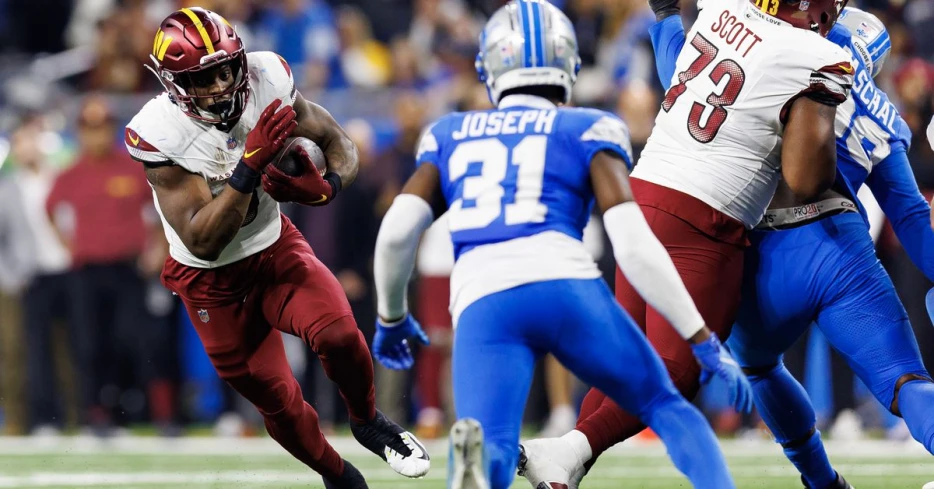
 Hogs Haven
Hogs Haven
Part 2 of the dive into what made Washington’s run game tick last season
My previous article on the Commanders’ running game revealed that the ability of the running backs to get off the line cleanly varied considerably throughout the season and overall rushing performance varied with it.
Those findings might suggest that rushing performance was limited by run blocking. But it’s equally possible that the Commanders’ RBs simply failed to make more than was given to them. And those two possibilities are not mutually exclusive. It is challenging to tease things apart analytically, because rushing and run blocking performance are not entirely separable.
Nevertheless, I thought it would be worth having a stab at seeing whether the metrics I used in the previous article can shed any light on whether the run blocking or the running backs were the limiting factors in Washington’s on-again, off-again rushing attack last season.
In the first article, I used team-level non-QB Yardage Before Contact as an outcomes-based metric for run blocking performance, and Rushing Success Rate to measure rushing performance. The rationale and analytical details are explained in that piece.
The main innovation was taking QB yardage out of the rushing stats. The reason for doing so is that the relationship between rushing and run blocking is fundamentally different for running QBs, like Jayden Daniels, and running backs. Daniels was so successful running the ball that his numbers skew the season statistics and obscure what was going on with the RBs. Removing rushing yards from the equation was the only way to get a clear view of the RBs’ performance.
The following graph plots Rushing Success Rate against team-level non-QB Yards Before Contact per Rush Attempt (YBC/att) for every NFL lead back in 2024. The “lead back” is the RB on each team with the most regular season rushing attempts. Most teams had a clearly defined lead back, such as Washington’s Brian Robinson. A few teams ran RB by committee or had an injury to the usual lead back. Regardless of the particulars, I went with the RB with the most carries. Washington’s RBs 2 through 4 are also included to see how they measured up.
There was a moderate level of correlation between Rushing Success Rate and team non-QB YBC/Att (r =0.50). There is a clear trend to the data, but there is also a great deal of scatter around the trend line. Overall, team-level yardage before contact, as a metric of run blocking, can explain around 25% of the variance in lead back rushing performance. That suggests that other factors are also at play. The most obvious of those is variation in running ability.
The trend line can be considered to indicate the expected rushing success for a given level of blocking performance. Running backs who create opportunities through superior vision, burst, or ability to run through contact, should sit above the trend line. Those who just take what the blocking gives...